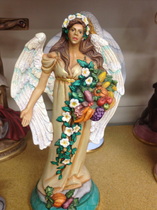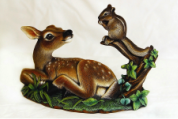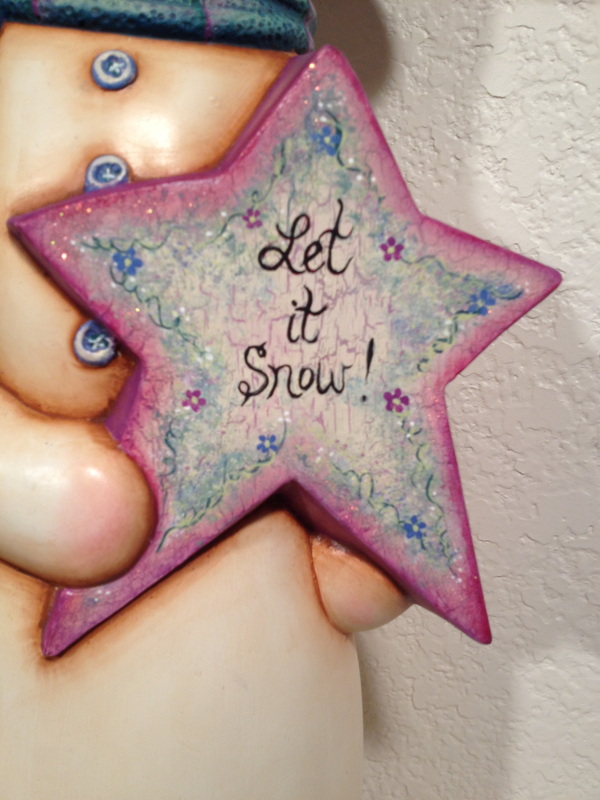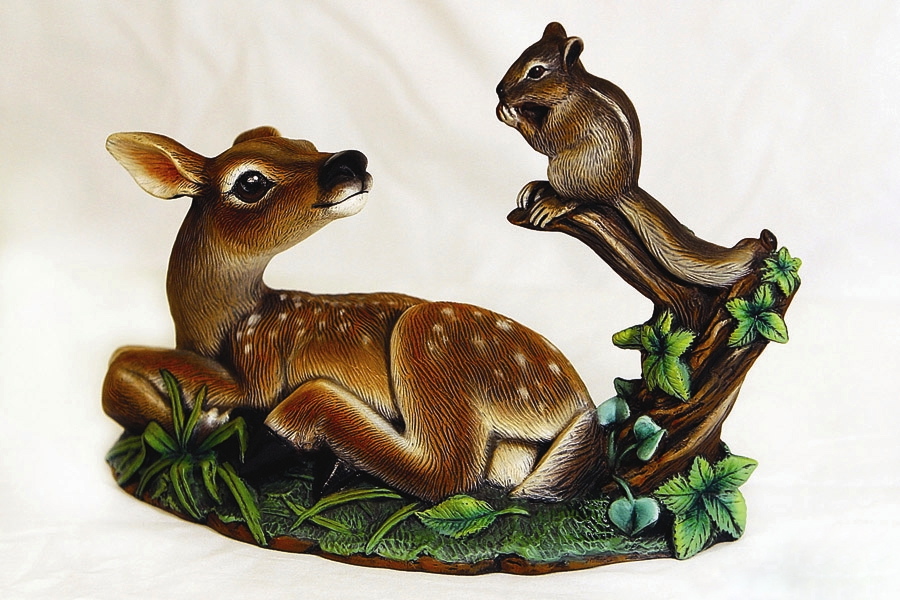|
Putting text on things can be intimidating. Here are a few options and tips that help me.
Options: Many options listed below that may work for text. There is a lot of information on the internet about how to use each specifically. Carving:
Stamps: – use a stamp to apply the color on greenware / bisque / glass using fired or non fired products. Coat stamp with acrylic or underglaze color for text using a brush or sponge, then firmly press stamp on smooth area of piece and carefully lift off.) Stencils – use them to airbrush, sponge or trace with on greenware / bisque / glass, with fired or non fired products. Screen Print – purchase a pre made screen or create your own, variety of options to apply on any surface. Easier than you think you can do it at home. (kits available through Colors For Earth) Scratching text - in with a scraffito tool through underglaze / glass color (done by removing the color) on greenware / bisque / glass Baked on Sharpie - on glaze, (bake at 425 in home oven 30 min) or on acrylic surface. Tracing images / text on your piece: Use Contact paper, Carbon paper or tissues paper. https://www.youtube.com/watch?v=JaHDNOCnGqQ Underglaze Options:
Free Hand: I almost always just paint free hand, and occasionally use a stamp if it's a specific /cute text or logo, picture etc. I have used a decal when it's a quote or verse or large amount of text. See tips below for help. Tips: - I measure the area to determine size and placement - do I want it all in a straight line, broken into two lines, angled or straight, centered etc. - I always write it out first on paper to see first to see how it will look. You can even put a little of your base coat color on the paper itself and when dry - experiment with different colors of text and styles of text - printing, cursive etc. You can cut this out and lay on your piece if you need more help visualizing what it will look like on your piece. - When working with Non fired products like acrylics I Prep the area. If I put a lot of work into the base area under the writing, I don't want to have to redo it if I make a mistake with a letter, so I will usually prep that area first to be sure it's easily wipeable. Flat paint - like just an acrylic base coat will immediatly absorb any paint put over it, so it can not be wiped off - you usually have to repaint and usually it takes a couple of coats if you are writing dark text over a light base and this can then become lumpy. So, to avoid this, I will either - 1. Antique the area. Depending on what you are working on, antiquing the surface will not only create a cool shaded look, but it will also seal that area. The oil in the antique naturally repels acrylic "water based" paints, so until the paint has completely dried and "set" it will wipe off very easily. I use damp paper towel and if the color appears to be smearing or not removing clean, a wet wipe will usually do the trick and it doesn't bother the antiqued base area underneath unless you use a forceful scrubbing motion, which isn't necessary. Once you are done, spray your piece and that will seal the acrylic text over any oil based antique to keep it from scratching off. I have never had any problems with this. 2. You can also Lightly spray the area with Matte Spray and allow it to dry before writing on it if you don't want the antiqued look. This seals the surface making it easy to wipe off. Then spray again to see letters. When working with fired products - I try to think through the fact that I will be putting text in an area and realize that I may need to wipe letters off- and how that will impact the area below. If mistakes are a fear, You might consider firing an underglaze area on first before painting text on so text can wipe off with damp sponge if needed without messing up base because it's already fired. Then finally when I am ready to apply the text: - Guide Lines: If needed to keep the writing straight or measured in a certain space, I will draw on any guide lines (bottom guide, height mark or start and stop marks) that might help with a water color fine tip marker. (You can get these from the office supply store, we use these to apply patterns on. Looks like a sharpie, but this marker will wash off easily with damp rag or completely fire out in the kiln.) For acrylics, wash the line off once your painted text is dry. Be sure you paint the text with something that will not wipe off - don't use a translucent. If you are using fired products, the water color marker will fire off without leaving residue. Sometimes I even draw on the text with the water color marker to see how it will look and get it exactly as I want it to use as a guide. Then I paint over the top of it with my acrylic, sharpie etc. - Decide what you will use to write / paint the text on with. You can use a sharpie marker if appropriate for your area, they come in all colors, but remember they are permanent - so you can't wipe them off if you make a mistake If you are very quick you may be able to get it off over a prepared surface, but keep in mind that this could be a problem. (But if you drew your text on with a washable marker first and you are simply tracing now with your sharpie to make it permanent, there may be less chance of making a mistake. I use my 10/0 liner loaded with paint slightly thinned with water which makes it flow more easily. Longer liners hold more paint and can help the text flow more smoothly, but can tend to get away from you and the tip can flip if you are not used to using this type of brush, so a shorter liner may be a better choice for you. Another great brush to use is the Kala Ultimate Scroller. (Get this from Colors For Earth) This is an amazing brush and has a tuft of squirrel hair in the top near the ferrule that acts as a reservoir, holding extra paint so you can write longer without picking up your line to reload your brush. They use this type of brush to detail scroll work on cars. Hope that helps, Happy Painting! Shelley  Doc Holliday's Fall Angel Doc Holliday's Fall Angel I have found that the pieces I have enjoyed painting the most, and was the most pleased with the finish, were those that I combined several products and techniques. I love love to paint with acrylics, but I have found that adding a type of translucent paint with my acrylics makes my piece stand out. As well as adding even a small section with a specialty product like Crackle or a specialty technique like marbling makes a big impact on the outcome. This fall angel has wet brushing, antiquing, intense translucence and marbling as well as a little band of fired gold. I have added several new How to Technique Packets to my online store as well as a few new Project packets for halloween. The "how to" packets teach the techniques. The project packets contain instructions to complete specific pieces. Several of this project packets combine multiple techniques. Have you ever applied Crackle to a piece and found that it didn't crackle very evenly? Maybe this will help
Be sure that you apply the crackle with a soft brush and use strokes that only go one direction, don't apply too thickly or it will run and drip. I like to paint mine in downward strokes so that if I get any unwanted runs or drips, they will be doing the same direction as my strokes as gravity will pull them downward. Try to watch for drips and smooth them out before they dry. If you can, lay your piece flat to keep it from dripping and running. Let this dry and then apply your top coat in the SAME direction. Be sure that you apply 1 solid coat of color also going in the same direction, and do not over lap strokes once the paint has dried, as this will fill in the crackling results. If you have a large area, you will need to work pretty quickly to get an even coverage that does not looked striped from your brushstrokes. Good Luck! Happy Painting! Shelley Using the very corner of your brush to shade can be very effective to create a tapered edge with a crisp outline. If you have an area that looks a little blah, you can use a color that is 1-2 shades darker (or lighter depending on your desired outcome) to border the edges. You can use this technique not only to shade edges but to create, by using this brush stroke to draw in designs and detail, leaving a soft look. So, whether you are after dramatic or subtle, this stroke is a definite addition to your skill set!
Happy Painting! Shelley _ If you are Wet Brushing or Dry Brushing and your desired goal is a soft White or lighter shade, consider using a lighter base coat. Look in the photo gallery, animal section at the Doc Holliday Lynx, this was base coated in black because I wanted a rich look with texture and depth. However, I wanted a softer effect for the animals, so the rest of the pierce was base coated in White and antiqued with Black Translucent. This still gives depth in the crevices and not far to go to achieve soft white shade when wet brushed. Be sure to let the antiquing dry completely so you don't muddy your white brush. You don't have to base coat a piece all one color, this combination gives interest and contrast.
Have fun painting and check back soon for another tip! Or you can click on the "get updates via RSS" below on the right to receive a notification when a new tip is added. Be Back Soon! Shelley Antiques can be a dramatic or subtle effect based on how you use them. In the 70-80's it was very popular to paint your entire piece and then antique it to help disguise wobbly lines and messy borders created by shaky hands and to change the tint of things to help them not look so pasty of singular dimension. Very popular for animals, skin effects and Indian pieces with leather, wood or fur.
Sometimes this left the painter discourage because after all their hard work, it not only disguised what they didn't like, but also changed the look of other colors they wanted to keep and left the piece looking dark or dull. Instead of applying the antique at the end, try antiquing just after your basecoat stage. This can add definition, give character or even give a "worn" look if that is desired. Consider also only antiquing certain areas or portions of the piece. As discussed in the tip on Base Coats, where I used Doc Holliay's Lynx as an example, you can use a light basecoat and antique with a darker color to give depth rather than using a dark opaque color when you what the finish to actually be a light shade. Dry brushing and wet brushing still work well over antiquing, as long as you allow it to have adequate time to dry. (Sometimes the wiping back can leave a shine on smooth areas, but once you begin brushing over it the shine disappears and it covers just fine.) I always wipe back my antique with a soft dry cloth. Certain paper towels like Viva work great because they are soft and durable and they are disposable...your family appreciates the fact that you're not stealing their favorite old T's or socks! *Be sure to not to paint too large of an area with the antique that you can not wipe back before it dries. This leaves streaks and ridges. To get even antiquing, only paint a moderate sized area and wipe back quickly with soft dry cloth. Continuing working in that manner until the whole desired area is done. Keep finding clean areas of your cloth, or replace with a new cloth or towel so you don't just keep smearing the antique back on. You shouldn't take a break in the middle and leave an area to finish later, this leaves hard transition marks when you stopped and started and they can be difficult to get even. * Once the area is wiped back with a clean dry cloth, get a new clean soft dry cloth and add a little mineral spirits to the cloth and really scrunch the cloth to distribute the damp chemical through the towel so there aren't any really saturated areas. Then lightly buff this on the piece, working against the grain, to remove excess antiquing and wipe back with still another clean DRY cloth. This will help keep smooth areas smooth and brighten the tops of detail. Don't leave large ares of antiquing in corners or crevices, only allow enough to remain to enhance, not muddle. Any areas that you want even brighter, cleaner or smoother, you can then use a small area of your cloth with more saturation of mineral spirits and buff that area more. Be care not to buff too vigorously or too long, as you can open a hole in your base coat layer and then apply the antique directly to the bisque which again, is hard to cover and make even. See the Paint along album on my Facebook to see Step #2 of Sarah Snow. This is antiquing over my basecoat and wiped back with mineral spirits to keep smooth. This toned my bright white down and left a "country" look to the body and put depth and character in the crevices. It also changed the color of the lavender to a country look, and left it exactly as I wanted for the next steps. Feel free to ask questions if you want more clarification! Happy Painting in 2012! Shelley _Finish Outlining: Look at your piece and determine if there are any areas that can be outlined either in the same color or a shade darker or complimenting color to clean up and give your piece a tight finished look. Using a liner brush loaded with thinned color, and carefully outline entire areas or just tidy up loose or wobbly edges.
|
Shelley Long
Ceramic Artist & Teacher 
_I will share various tips for painting on this page, I hope you enjoy
them! Please feel free to ask questions or comment, it's always nice to
hear from other painters and I am happy to help any way I can! I will be adding various technique packages to the online store and when I
do I will post an update here to let you know a technique has been
added. Check back soon tips !
God Bless & Happy Painting! Shelley Receive Updates
program for scheduling - by BookFresh Categories
All
Archives
March 2016
Back to
|








